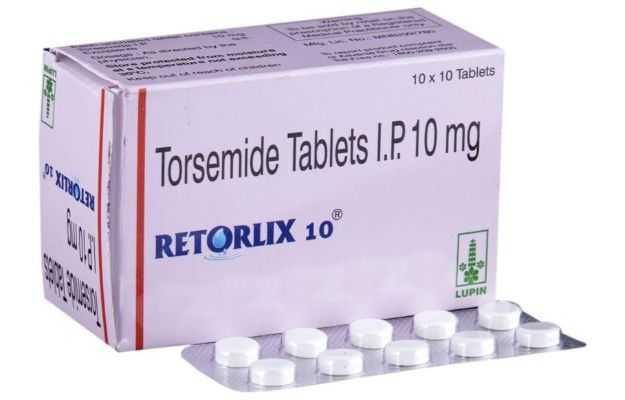Buy Torasemide EU | What is Torasemide?
Buy Torasemide EU | Torasemide, also known by its brand name Demadex, is a medication used to treat conditions such as edema (fluid retention) and hypertension (high blood pressure). It belongs to a class of drugs called loop diuretics, which work by increasing the amount of urine produced by the kidneys. This helps to reduce fluid buildup in the body, leading to improved symptoms and a decrease in blood pressure.
Torasemide is available in the form of tablets and is usually taken orally. It is commonly prescribed by healthcare professionals to manage conditions where excess fluid accumulation can be problematic, such as congestive heart failure, liver cirrhosis, and kidney disorders. It is essential to follow your doctor’s instructions and take Torasemide as prescribed to ensure optimal effectiveness and minimize the risk of side effects.
Please note that this content is for informational purposes only, and you should consult your healthcare provider for personalized advice and guidance regarding Torasemide or any other medication.
How does Torasemide work?
Torasemide, a loop diuretic, works by targeting a specific part of the kidney called the loop of Henle. The loop of Henle plays a vital role in the reabsorption of sodium and chloride, which are essential electrolytes for maintaining fluid balance in the body.
When Torasemide is ingested, it enters the bloodstream and reaches the kidneys. It acts on the sodium-potassium-chloride co-transporter in the ascending limb of the loop of Henle, inhibiting its function. By doing so, Torasemide prevents the reabsorption of sodium and chloride ions back into the bloodstream.
As a result, more sodium and chloride remain in the urine, and water follows them due to osmosis. This increased excretion of sodium, chloride, and water helps to reduce fluid retention in the body and decreases the overall volume of blood, leading to a decrease in blood pressure.
It’s important to note that Torasemide’s mechanism of action differs slightly from other loop diuretics, such as furosemide. Torasemide is believed to have a more prolonged duration of action and a greater bioavailability, which means it remains active in the body for an extended period and is absorbed more efficiently.
How Do I Take Torasemide?
When taking Torasemide, it’s crucial to follow the instructions provided by your healthcare provider. The dosage and frequency of administration may vary depending on your specific medical condition and individual needs. Always consult your doctor or pharmacist for personalized advice.
Here are some general guidelines for taking Torasemide:
- Take Torasemide exactly as prescribed by your doctor. Do not take more or less than the recommended dose.
- Torasemide is typically taken orally, with or without food. Follow your doctor’s instructions regarding the best time to take the medication.
- Swallow the tablet whole with a glass of water. Do not crush or chew the tablet unless your doctor advises otherwise.
- If you forget to take a dose, take it as soon as you remember. However, if it is close to the time for your next scheduled dose, skip the missed dose and continue with your regular dosing schedule.
- Do not stop taking Torasemide abruptly without consulting your doctor, even if you start feeling better. Sudden discontinuation can lead to a rapid increase in fluid retention or blood pressure.
Remember, these instructions are general in nature. Always consult your healthcare provider for precise guidance on how to take Torasemide based on your specific condition and medical history.
What are the side effects of Torasemide?
Like any medication, Torasemide may cause side effects in some individuals. It’s important to note that not everyone experiences these side effects, and their severity can vary from person to person. Additionally, most side effects are generally mild and transient. However, if you experience any persistent or severe symptoms, it is important to seek medical attention promptly.
Common side effects of Torasemide may include:
- Increased urination: Due to its diuretic action, Torasemide can cause an increase in urine output. This is a desired effect but may sometimes be bothersome, especially if it interrupts your sleep. Taking the medication earlier in the day can help minimize this effect.
- Dizziness or lightheadedness: Torasemide can occasionally cause a drop in blood pressure, resulting in dizziness or lightheadedness. It is advisable to get up slowly from a lying or sitting position to minimize the risk of falls.
- Muscle cramps: In some cases, Torasemide can lead to muscle cramps or spasms. Staying well-hydrated and ensuring an adequate intake of electrolytes may help alleviate this side effect.
- Headache: Headaches can occur as a result of the medication’s impact on blood pressure. If headaches persist or worsen, consult your doctor.
- Digestive issues: Torasemide may cause gastrointestinal disturbances such as nausea, vomiting, or stomach discomfort. Taking the medication with food or adjusting the dosage timing can sometimes alleviate these symptoms.
It’s important to remember that this is not an exhaustive list of side effects, and other rare or more severe reactions can occur. If you experience any unusual or persistent symptoms while taking Torasemide, it is crucial to inform your healthcare provider promptly. They can evaluate your condition and provide appropriate guidance.
Buy Torasemide EU | Buy Torasemide EU
Only logged in customers who have purchased this product may leave a review.






Reviews
There are no reviews yet.